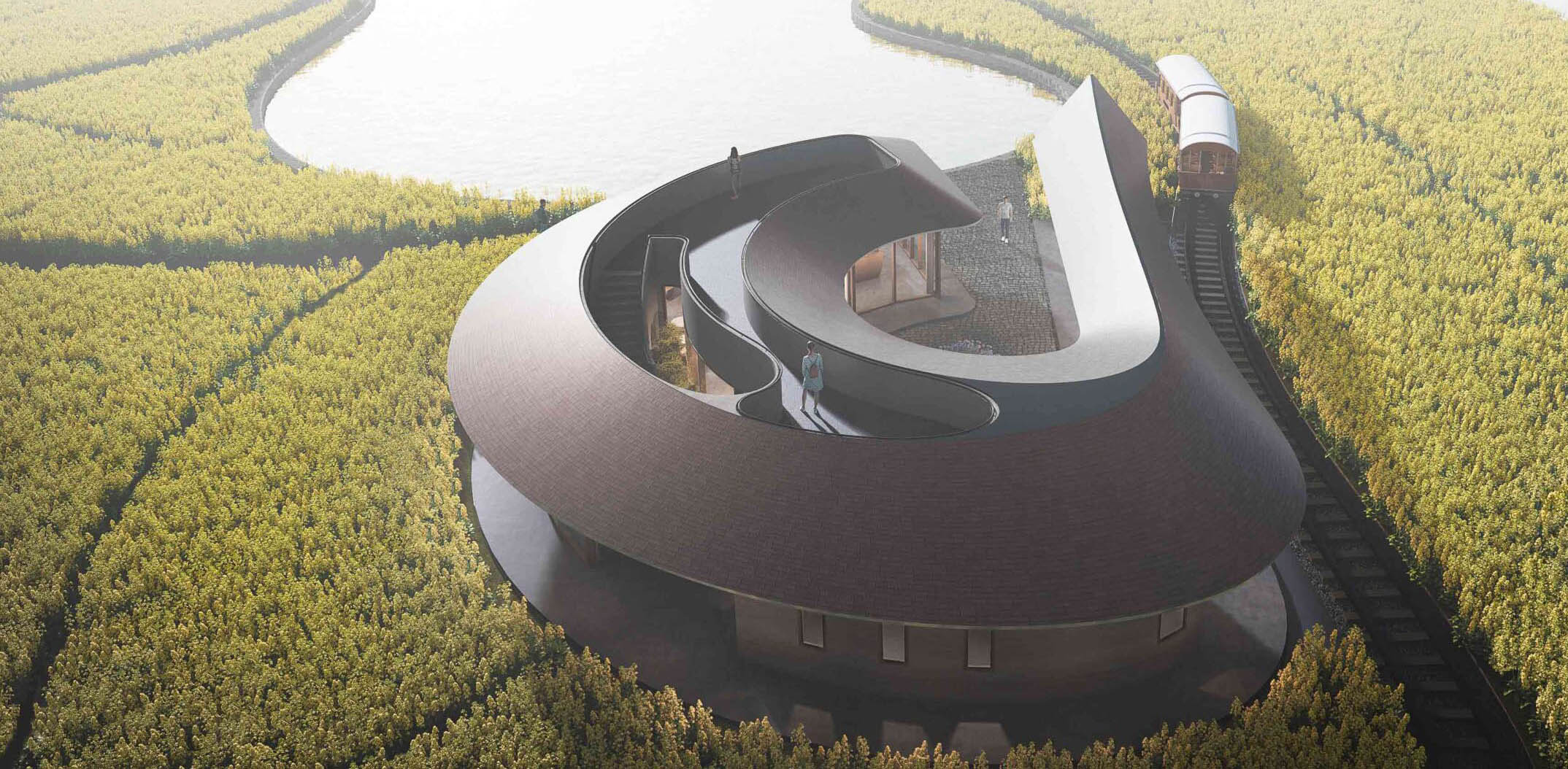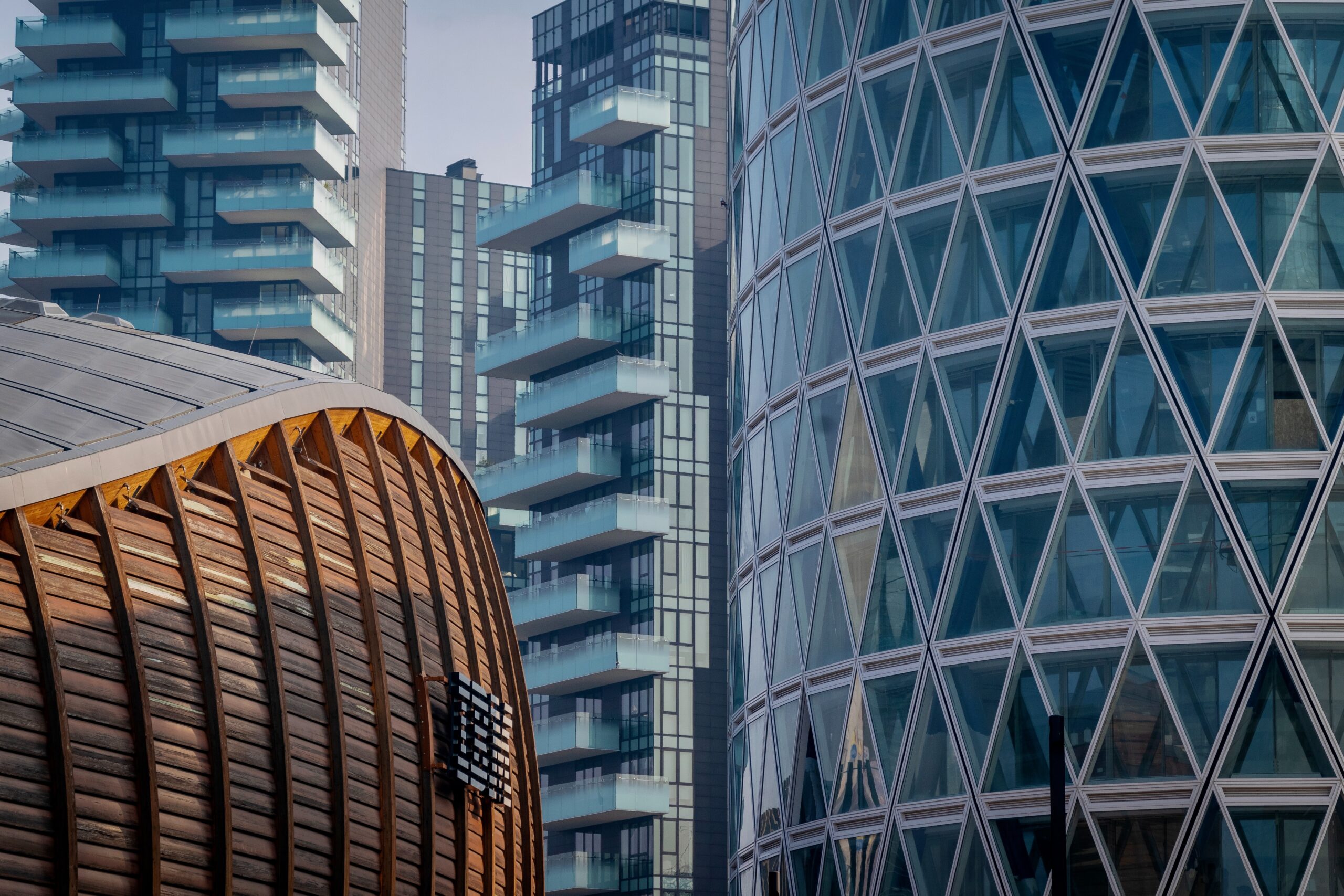The judging process for Architizer's 12th Annual A+Awards is now away. Subscribe to our Awards Newsletter to receive updates about Public Voting, and stay tuned for winners announcements later this spring.
Places of transit are, by their very nature, liminal spaces. These passages between locales are shaped by spatial users’ rhythmic ebbs and flows. Yet, in deft hands, transportation structures can transcend this hazy realm of the in-between to become meaningful destinations in their own right.
Far from anonymous passing places, these astonishing infrastructure projects from the 11th A+Awards are making their mark on the global map. From public thoroughfares and funicular railways to subway stations and airport terminals, discover the extraordinary ways architects and interior designers are taking transport spaces in innovative, new directions.
1. Accommodating All Spatial Users
One Green Mile – Public Space and Streetscape Design by StudioPOD, Mumbai, India
Jury Winner, 11th Annual A+Awards, Sustainable Transport Project
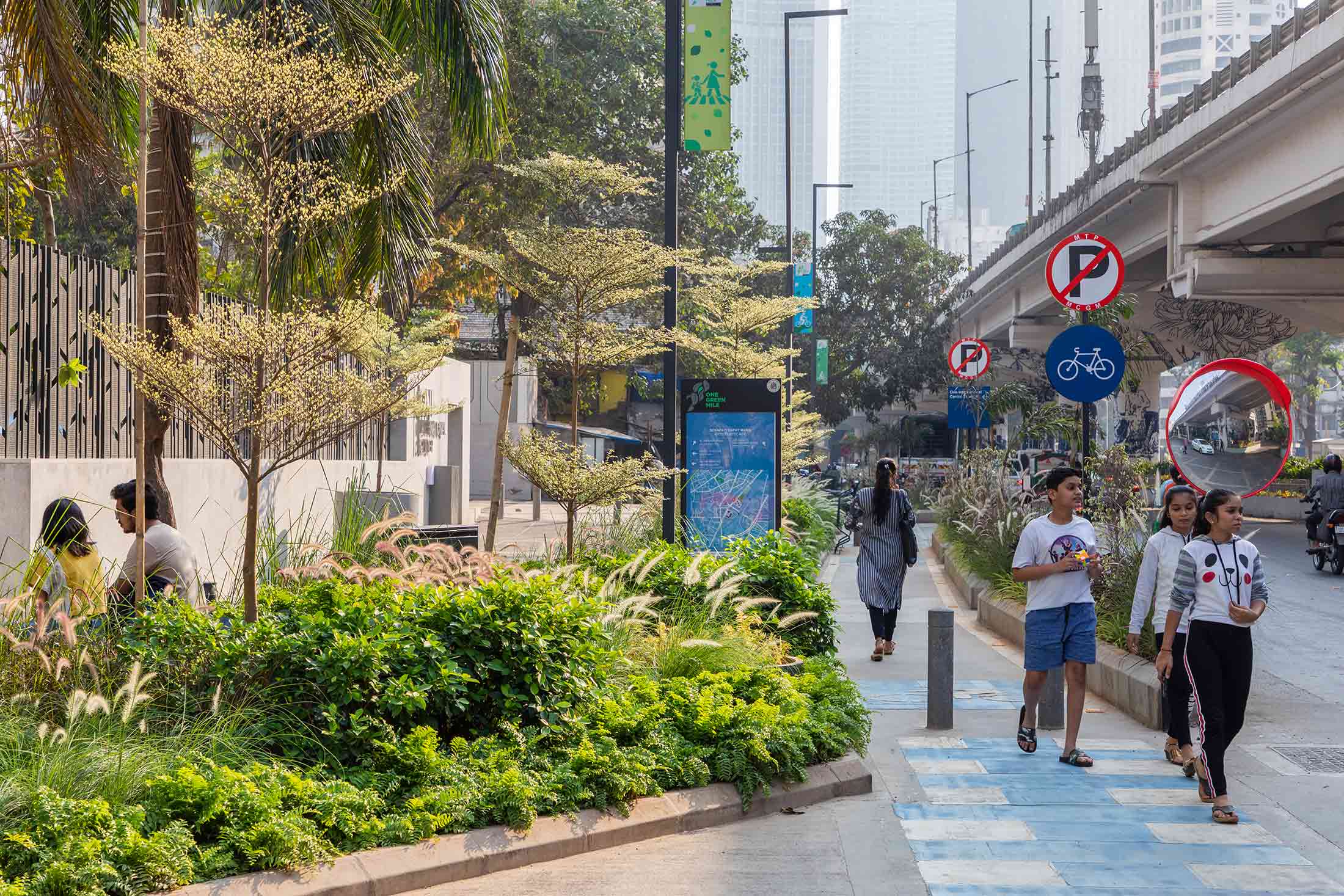
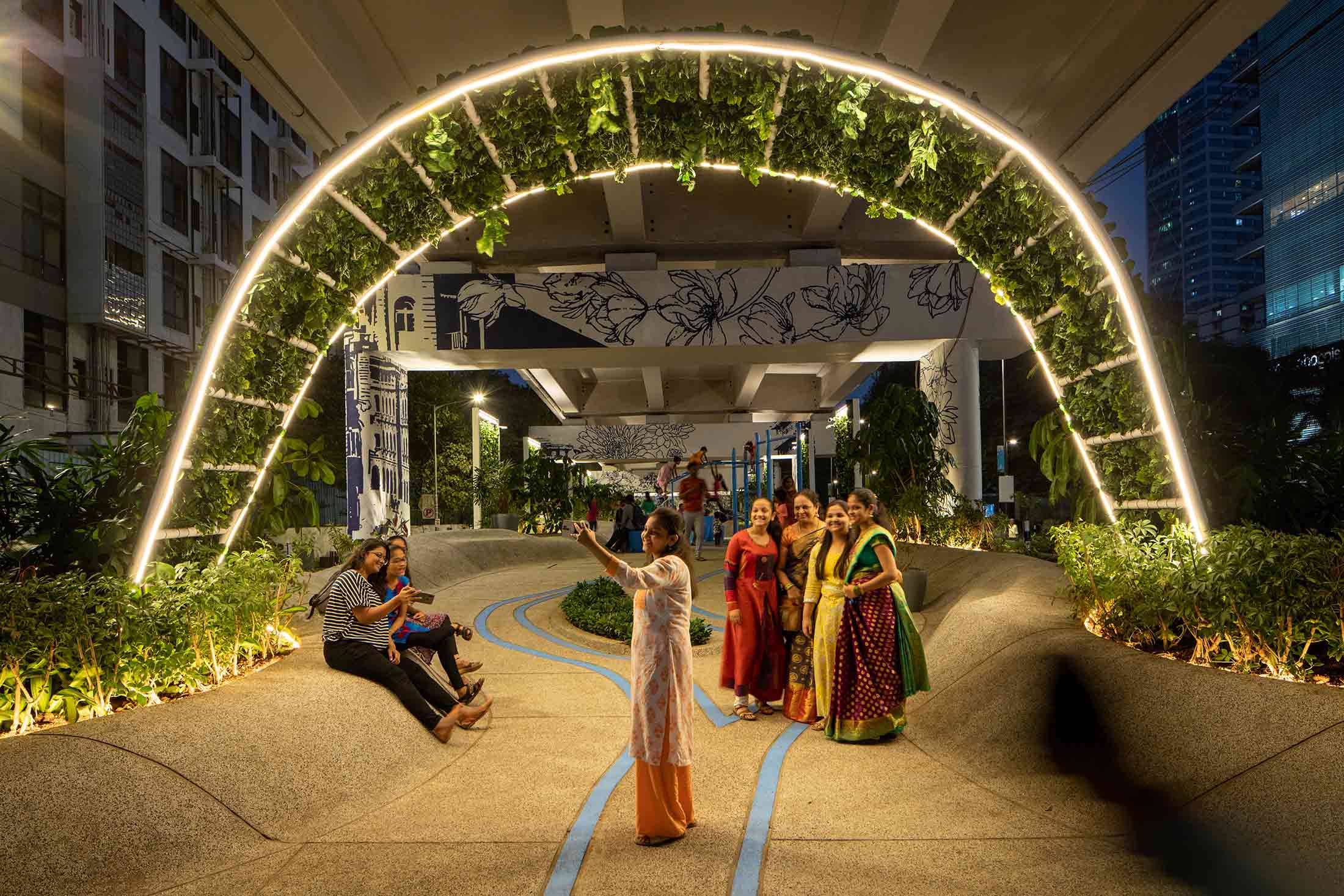 This pioneering planning project in Mumbai balances efficient transportation infrastructure with the needs of the local community. One of the city’s busiest stretches, the street’s geometries were ingeniously reconfigured to improve the flow of traffic. Meanwhile, a parking zone was absorbed into a new, wider public pathway that accommodates pedestrians and cyclists amid a burgeoning ecosystem of planting.
This pioneering planning project in Mumbai balances efficient transportation infrastructure with the needs of the local community. One of the city’s busiest stretches, the street’s geometries were ingeniously reconfigured to improve the flow of traffic. Meanwhile, a parking zone was absorbed into a new, wider public pathway that accommodates pedestrians and cyclists amid a burgeoning ecosystem of planting.
The regeneration initiative also carved out valuable communal spaces for the public to enjoy. A disused zone beneath a flyover was transformed into a meeting plaza, complete with play areas, an ampitheater and seating, enveloped by graphic murals. Smaller micro plazas are nestled along the road, punctuating the commuting route with scenic pockets of nature.
2. Fusing Environmental and Digital Landscapes
CUCADELLUM – Funicular to the Tibidabo Amusement Park by MIAS Architects, Barcelona, Spain
Popular Choice Winner, 11th Annual A+Awards, Sustainable Transport Project
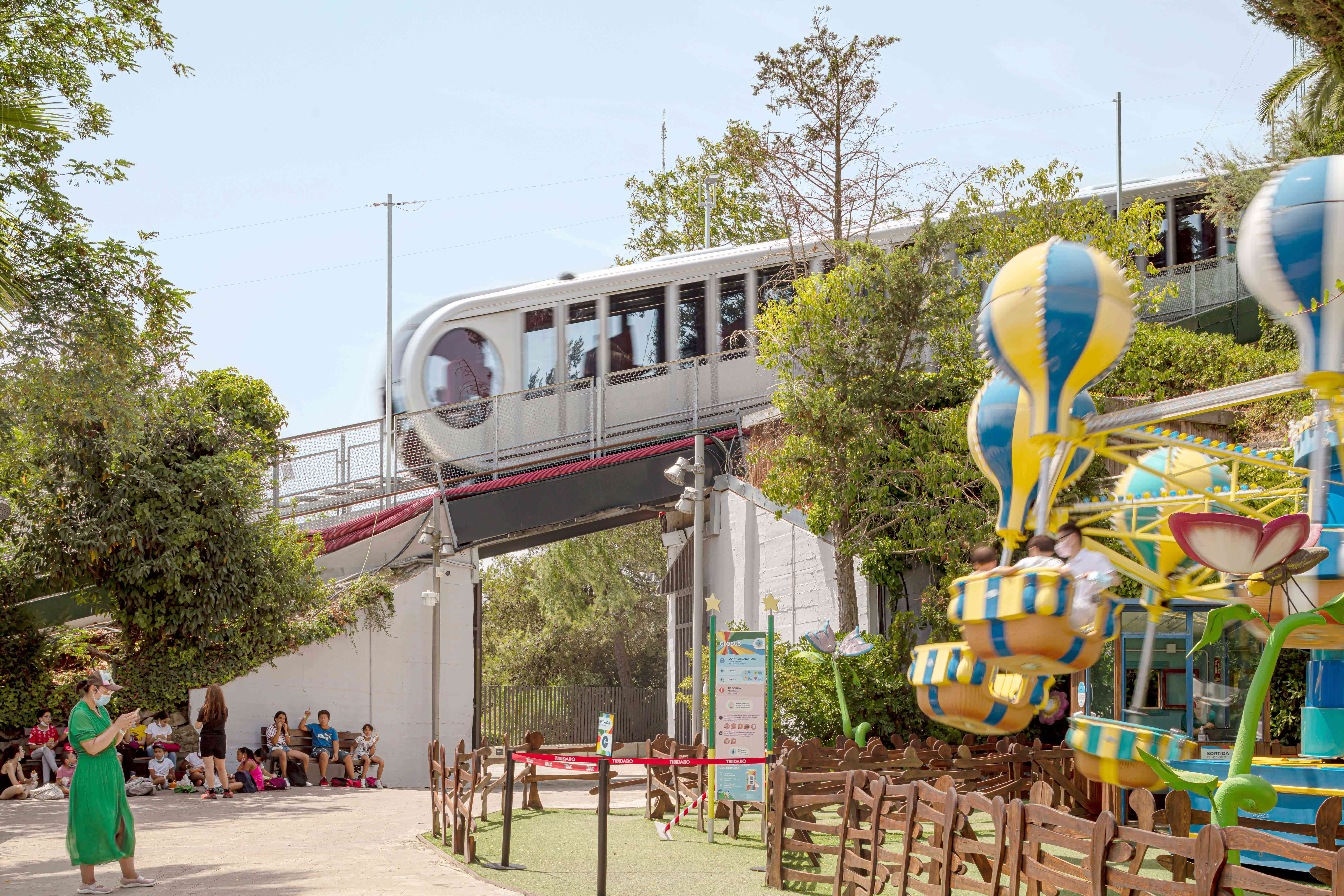
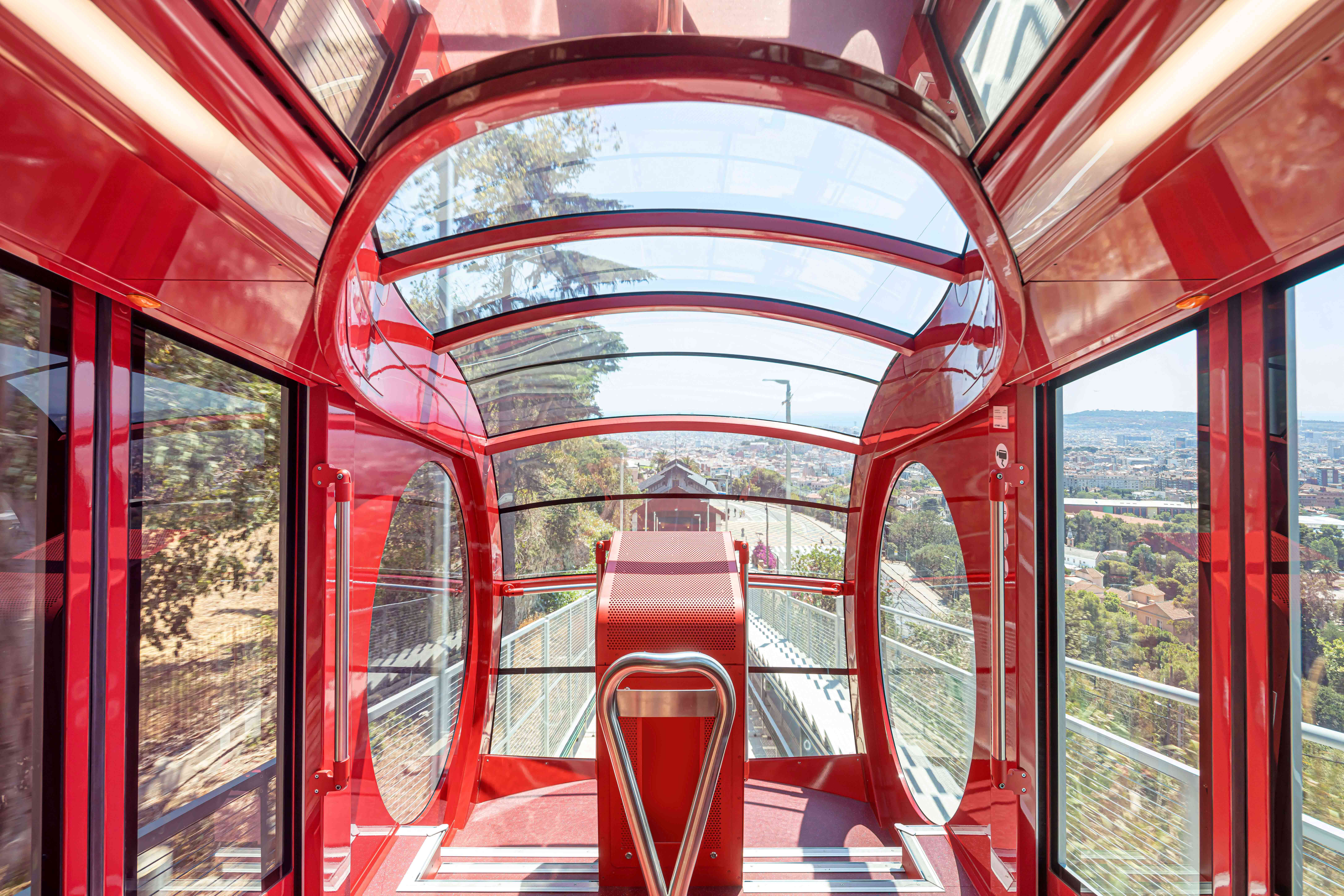 Located within a Barcelona theme park, this remarkable funicular railway system was envisaged as an extension of the complex’s existing attractions. The glazed carriages function as porous viewing platforms that put the park’s varied sights center stage, from the mountainous terrain to whimsical amusements.
Located within a Barcelona theme park, this remarkable funicular railway system was envisaged as an extension of the complex’s existing attractions. The glazed carriages function as porous viewing platforms that put the park’s varied sights center stage, from the mountainous terrain to whimsical amusements.
As well as celebrating the immediate landscape, the design emphasizes the socio-historic roots of this transportation method too. The carriages are entwined with a sophisticated digital infrastructure — an array of touch screens and tablets enable visitors to delve back through the history of the funicular railway and its construction through a range of educational, interactive resources.
3. Making the Past Palpable
Stations of Shanghai Metro Line 18 by Shanghai Rail Transit Line 18 Development Co., Ltd., Shanghai, China
Popular Choice Winner, 11th Annual A+Awards, Transport Interiors
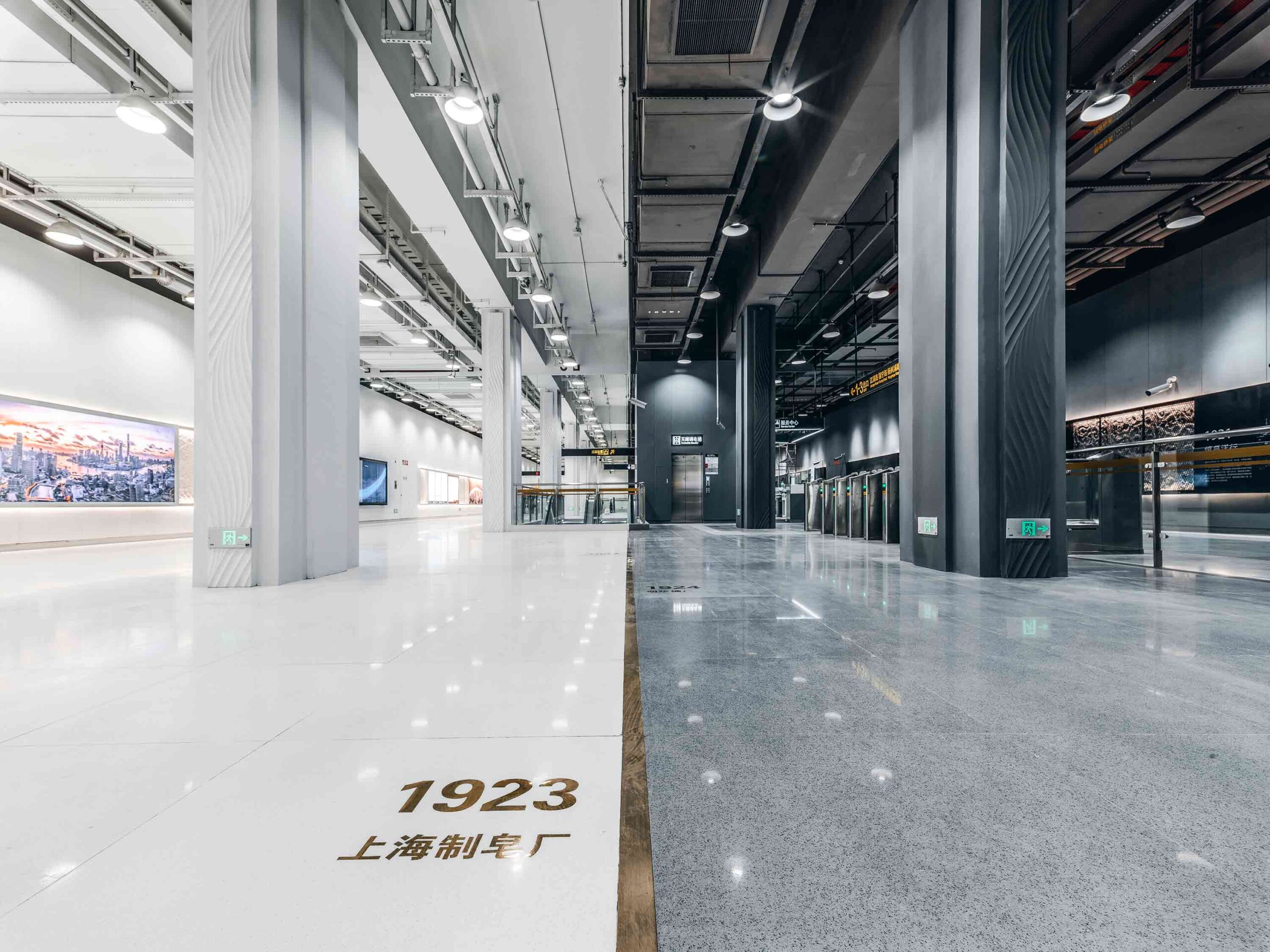
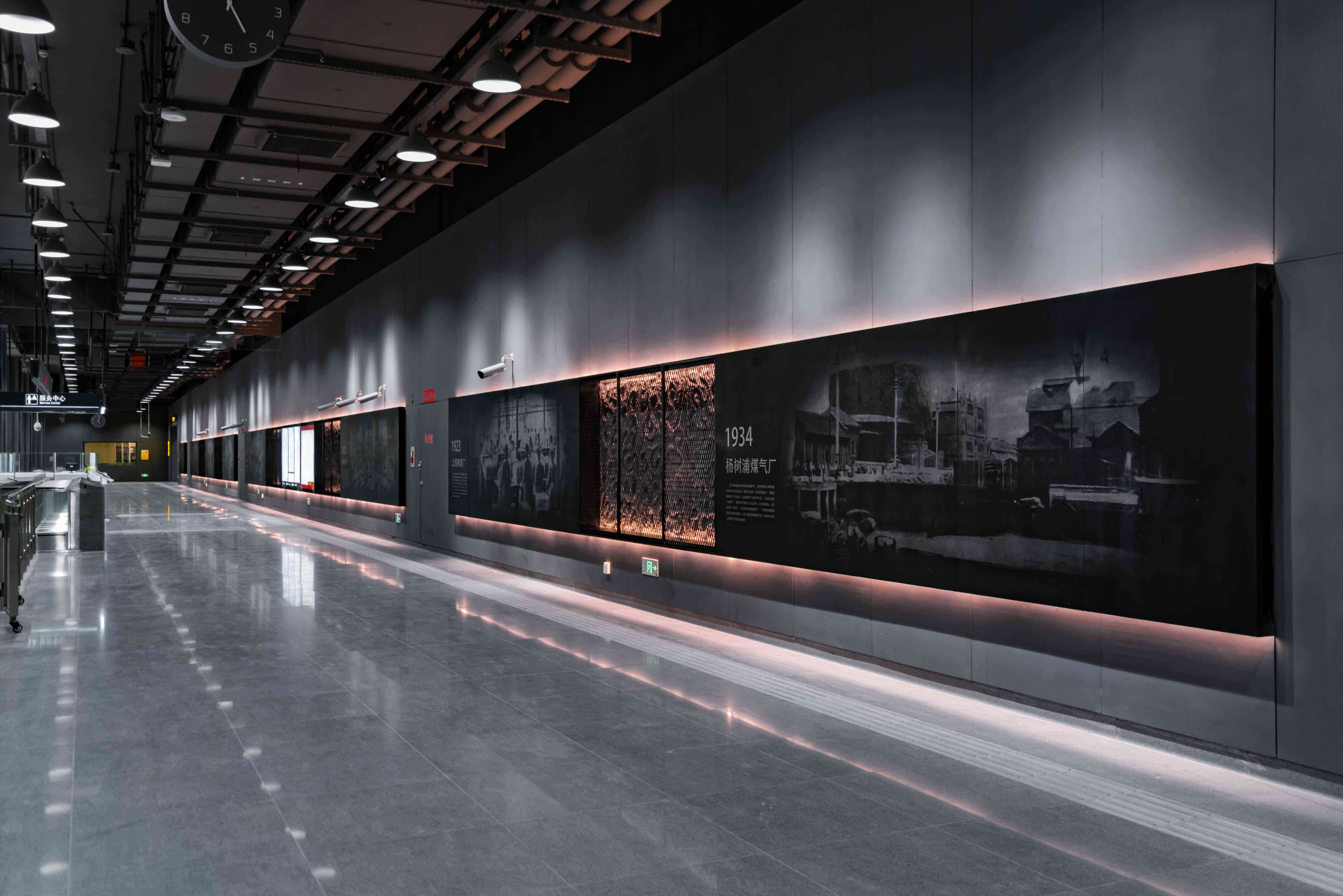 Shanghai’s Metro Line 18 is a masterclass in bringing the past to bare on a new era of development. The line’s trajectory bisects the waterfront neighborhood of Yangpu Binjiang, one of the birthplaces of modern Chinese industrial civilization. The district’s rich history is imbued in the radical redesign of its 26 hubs, exemplified by Danyang Road Station (pictured).
Shanghai’s Metro Line 18 is a masterclass in bringing the past to bare on a new era of development. The line’s trajectory bisects the waterfront neighborhood of Yangpu Binjiang, one of the birthplaces of modern Chinese industrial civilization. The district’s rich history is imbued in the radical redesign of its 26 hubs, exemplified by Danyang Road Station (pictured).
The scheme is steeped in spatial storytelling. Bold and graphic in its execution, black and white hues are juxtaposed on either side of the main concourse. The visual contrast symbolizes a temporal division, with each zone depicting different periods in the region’s timeline through visual information boards. This thought-provoking project has transformed a transitional space into a site of education, one that makes the past strikingly palpable amid the hubbub.
4. Innovating with Modular Elements
47 Modules by Leehong Kim Architects, Seoul, South Korea
Jury Winner, 11th Annual A+Awards, Transportation Infrastructure
Jury Winner, 11th Annual A+Awards, Architecture +Glass

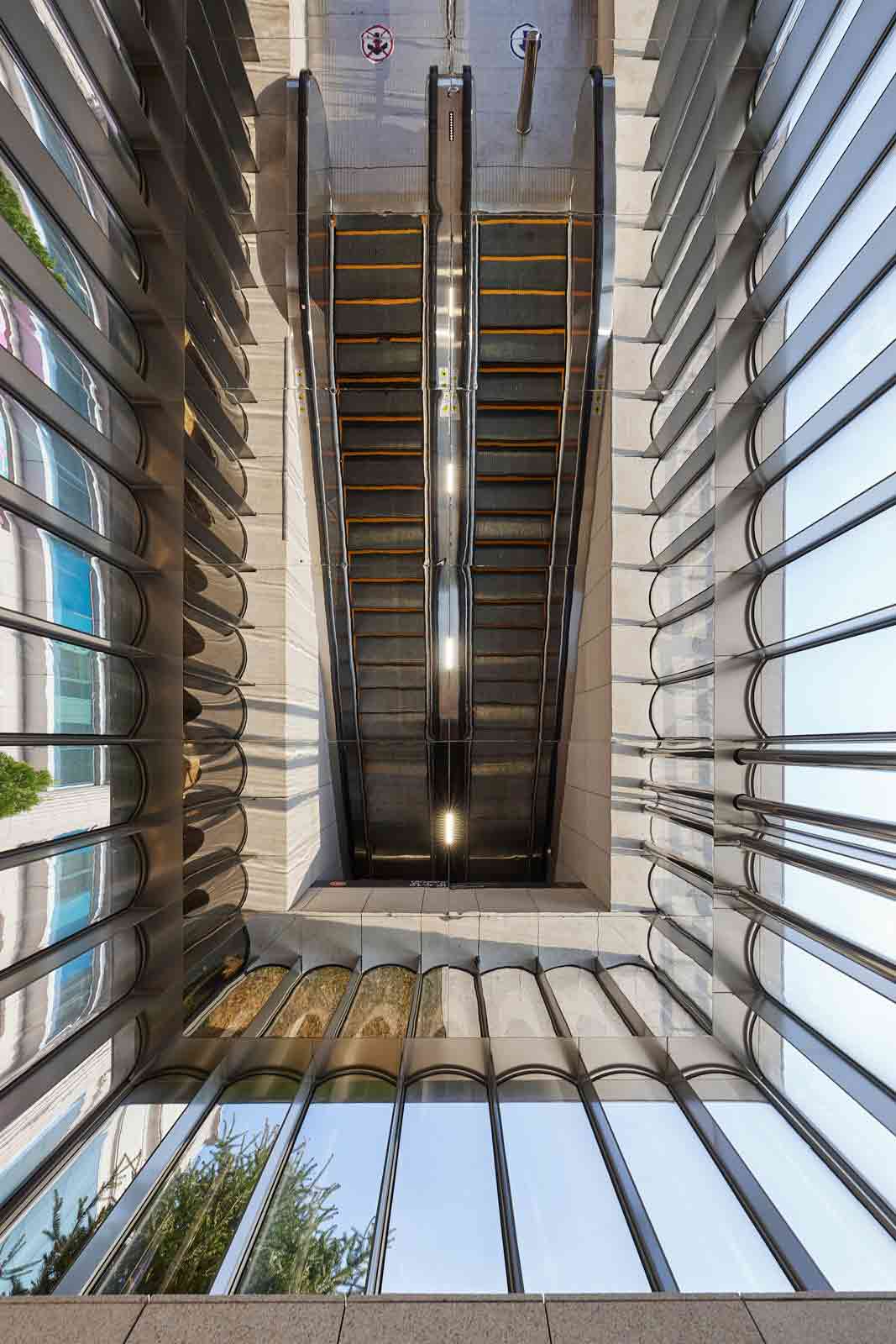 Poised at a busy intersection in Seoul, this striking glass box is in fact a subway entrance. While the undulating volume is fluid in appearance, it’s formed of 47 individual modules of granite and glass, each shaped into a precise arc. The structure is grounded by its stone base, yet flickers of light dance across the glazing, evoking a sense of movement, as though channeling the rhythms of bustling Seoul.
Poised at a busy intersection in Seoul, this striking glass box is in fact a subway entrance. While the undulating volume is fluid in appearance, it’s formed of 47 individual modules of granite and glass, each shaped into a precise arc. The structure is grounded by its stone base, yet flickers of light dance across the glazing, evoking a sense of movement, as though channeling the rhythms of bustling Seoul.
Descending into the subway is a surreal experience. A mirrored ceiling multiplies the glass modules, creating the illusion of a glittering shaft reaching deep below the city. After dusk, the entrance reads as a glowing lantern from street level, beckoning the route home.
5. Embracing Biophilia
JR Kumamoto Railway Station Building by NIKKEN SEKKEI LTD, Kumamoto, Japan
Jury Winner, 11th Annual A+Awards, Transport Interiors

 Railway stations are often considered staid, industrial hubs — uneventful intermediary zones between locales. However, this daring project on the Japanese island of Kyushu hides a whimsical inner world within its walls. Externally, trees, benches, fountains and a reflecting pool articulate the front of the station as a verdant park, offering glimmers of the unexpected topography that lies inside…
Railway stations are often considered staid, industrial hubs — uneventful intermediary zones between locales. However, this daring project on the Japanese island of Kyushu hides a whimsical inner world within its walls. Externally, trees, benches, fountains and a reflecting pool articulate the front of the station as a verdant park, offering glimmers of the unexpected topography that lies inside…
A vast, green oasis is interwoven through the heart of the building. Nestled in a towering atrium between the floors of restaurants and retail stores, the flourishing ecosystem incorporates trees, foliage, rocks and a waterscape. A tranquil waterfall cascades down from the ninth story, its soothing hum an unlikely soundtrack for the daily tidal waves of commuters.
6. Disrupting Traditional Typologies
LaGuardia Airport Terminal B by HOK, New York City, New York
Popular Choice Winner, 11th Annual A+Awards, Transportation Infrastructure
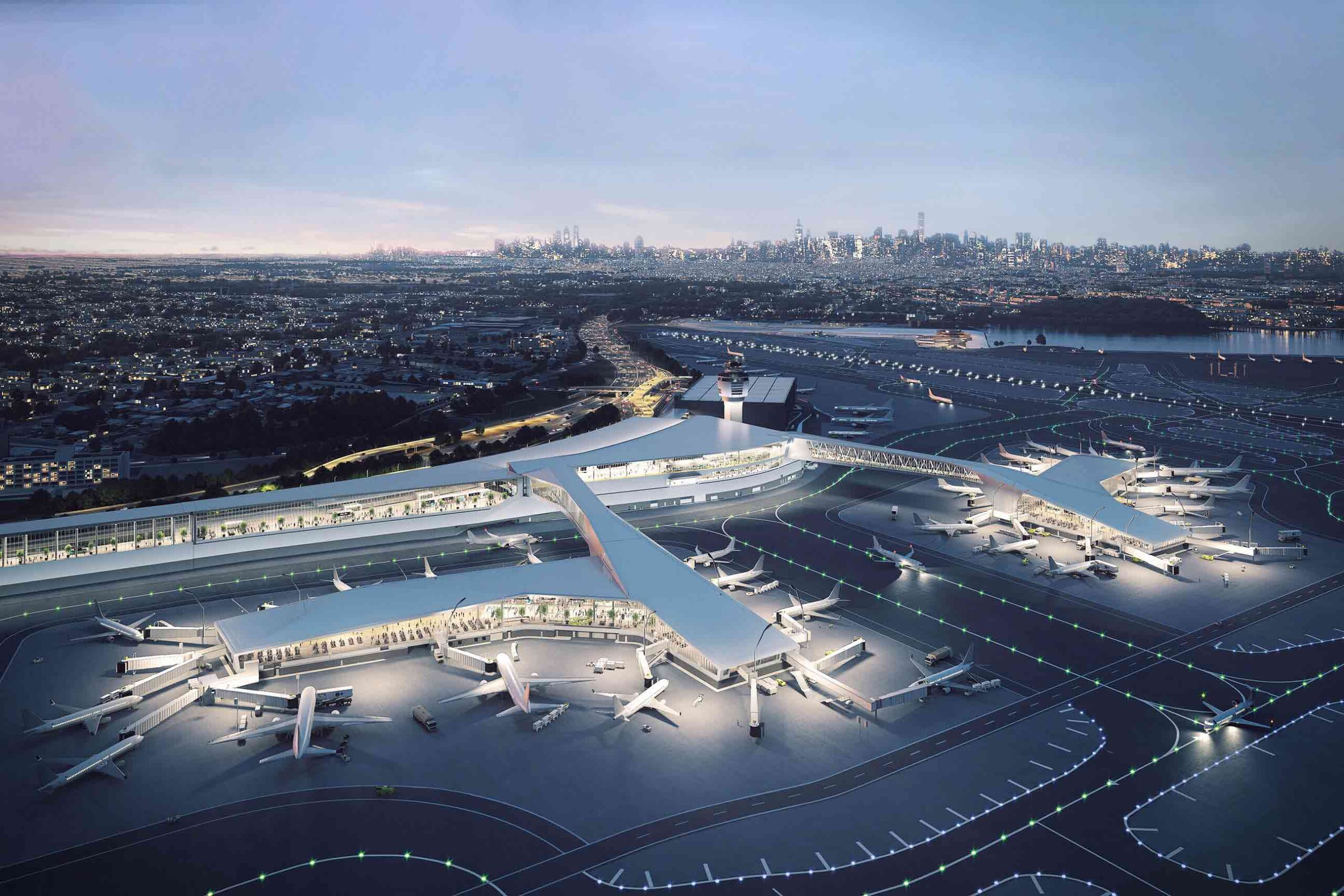
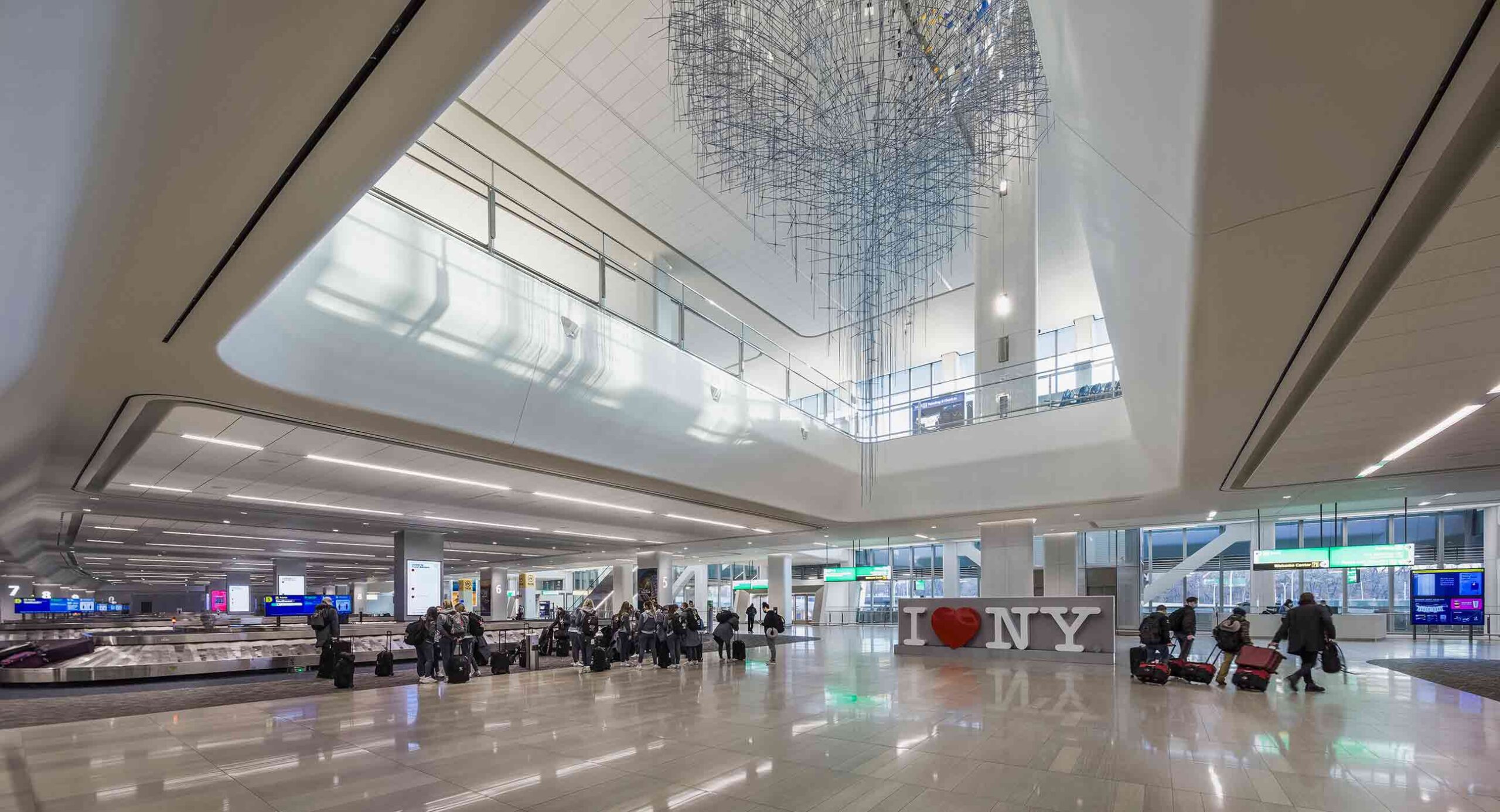 LaGuardia Airport’s newest terminal subverts conventional typology with an adventurous new form. While the original brief sought a traditional structure with finger concourses, an innovative alternative was proposed: two island concourses connected by glass-lined footbridges. Not only did the new vision free up 40 acres of land for aircraft operations, but it also shrunk the budget and build schedule, all while setting an impressive benchmark for sustainable practice in civil architecture.
LaGuardia Airport’s newest terminal subverts conventional typology with an adventurous new form. While the original brief sought a traditional structure with finger concourses, an innovative alternative was proposed: two island concourses connected by glass-lined footbridges. Not only did the new vision free up 40 acres of land for aircraft operations, but it also shrunk the budget and build schedule, all while setting an impressive benchmark for sustainable practice in civil architecture.
The terminal interior features vast, lofty spaces across departure lounges and the oft-neglected arrivals zones. Framed by panes of floor-to-ceiling glass, daylight was thoughtfully utilized throughout the sprawling scheme — main circulation paths are illuminated, while shifting light levels indicate a transition between non-secure and secure areas of the airport too.
7. Unifying Ecology and Industry
Station in the Field by ZZYYstudio, Concept
Jury Winner and Popular Choice Winner, 11th Annual A+Awards, Unbuilt Transportation
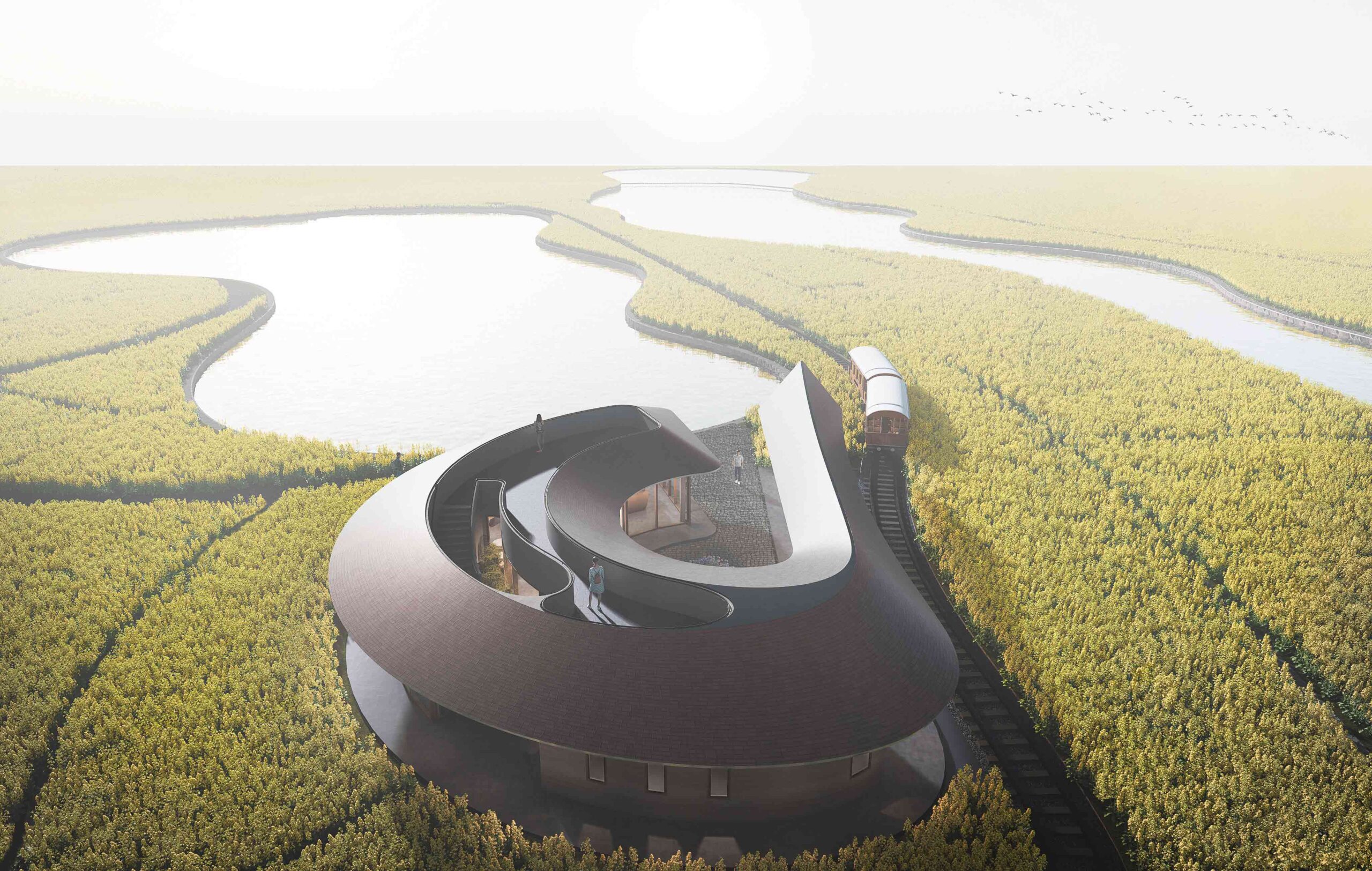
 What happens when the transit space becomes the main attraction? This concept design imagines a remote stop along a sightseeing railway as a portal into the organic landscape. Tightly wound into itself, the curvilinear structure provides a 360-degree outlook over an enchanting patchwork of fields and waterways.
What happens when the transit space becomes the main attraction? This concept design imagines a remote stop along a sightseeing railway as a portal into the organic landscape. Tightly wound into itself, the curvilinear structure provides a 360-degree outlook over an enchanting patchwork of fields and waterways.
While the glazed waiting room offers a passive vantage point, the station holds layers of dynamic potential too. Passengers can traverse the open rooftop, explore the cobbled courtyard and wander amid the golden crops. Rather than counting down the minutes, this astonishing waiting place unravels a rich, pastoral world that invites travelers to disengage from their frenetic schedules and surrender to the great outdoors.
The judging process for Architizer's 12th Annual A+Awards is now away. Subscribe to our Awards Newsletter to receive updates about Public Voting, and stay tuned for winners announcements later this spring.
